Pharm Exec's Emerging Pharma Leaders 2015
Pharmaceutical Executive
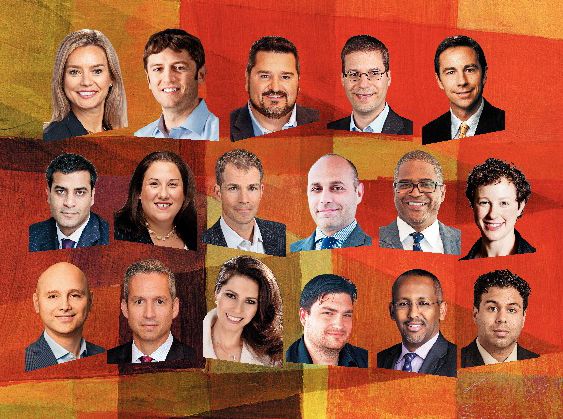
Meet Pharm Exec’s 2015 roster of 17 Emerging Pharma Leaders. Selected independently by our editorial staff with support from members of our Editorial Advisory Board, this year’s group adds to a list of more than 200 alumni dating back to June 2008. We called that first cohort of leaders “the change generation” and frankly the description remains apt today-change is still the constant because there is no single commercial model that offers a surefire guarantee of success. What is different is a greater diversity in leader backgrounds and the skills required to advance to the “c-suite.” We are seeing more bench strength in vaccines and generics, once adjacent businesses that are now key sources of product and process innovation; a transformation of finance and manufacturing roles, from a technical function to a strategic priority; new competencies in organization design that help field forces get even closer to the customer; the refiguring of medical affairs as liaison to a more informed patient community; and the advent of a new generation of in-house technologists, imported from outside the industry, with the capabilities to deliver customized digital messaging in multiple channels, on many fronts.
- William Looney, Editor-in-Chief

The 48 Hour Turnaround
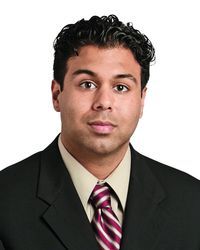
Rahul Aras, CEO, Juventas Therapeutics
“Running a start-up, there are moments that test your conviction, that have you questioning the basis of your technology, the data you’ve gathered to date, and your overall vision. Larger companies might have the ability to ride these moments out, but young companies don’t have that liberty.”
Rahul Aras, CEO of Juventas Therapeutics, recalls a period following the company’s first fundraise while in the midst of a key large animal study for lead product, JVS-100, a gene therapy developed to activate the body’s repair pathways, now in Phase II trials for patients with advanced ischemic heart failure and late-stage peripheral artery disease.
Juventas was in between its Series A fundraise and a board meeting when it saw preliminary results from a large animal study that were “discouraging” relative to benefits seen in earlier rodent studies. “When data comes in that are not consistent with the primary objective, a start-up has the choice to either fold or respond.”
Aras and his Cleveland-based team had a tough conversation: “Do we believe in the biology, the science that is the foundation of the experimental treatment, and in the data produced to date? If so, then this new data is trying to tell us something.”
Despite having just 48 hours to solve the problem, the team didn’t panic, but intensely scrutinized the results. The group was able to find a signal that frames the basic concept at the heart of the treatment’s mechanism of action, that in patients/animals with greater tissue damage, they saw a stronger, more demonstrable response to the treatment. An effect that has been replicated in recent human clinical trials evaluating JVS-100 in patients with advanced chronic heart failure.
The team responded in remarkable time with an action plan for a mid-study course correction and was able to meet its timeline for a successful investigational new drug application. Moments like this can define a company, although in reality, there are dozens of comparable moments, the CEO notes.
Aras credits the team he constructed for its ability to maintain focus and make calm decisions when challenges present themselves. If he takes credit for anything, it’s that he’s hired well. “I look at myself as a team builder.”
“Hiring is a key focus,” he noted. “Setting goals and making sure we meet them is essential for any management role, and we’ve hit all our milestones in budget.” But Aras pins the success Juventas has experienced to date on having recruited top tier talent and maintaining an open culture where employees have the opportunity to succeed.
Juventas takes fun seriously, Aras adds. Anyone in the drug development industry will agree this is not an easy job, so levity can be a vital instrument. There are a lot of factors out of your control. In this industry, everyone comes to work with a purpose, adds the CEO. “We take our commitment to developing therapies seriously but want to enjoy the journey.”
As the company has grown, Aras has seen his role expand from basically being a project manager in the early days, to the quintessential CEO managing multiple functions. Every day is different as Aras spends copious time traveling from Cleveland to the coasts, constantly communicating Juventas’ story, executing on business development and managing clinical progress. “It’s clearly a cliché, but we’re always raising funds”-$45 million to date with VC backing as well as support from Takeda Ventures and the Cleveland Clinic.
Juventas’s technology is born of Cleveland Clinic science, where Aras worked in the innovation office as the Director of Life Science Commercialization spearheading the biotech portfolio and seeking partnerships. Prior to his time at the Cleveland Clinic, Aras followed his PhD in biomedical research at New York University with a stint at Cold Springs Harbor’s Office of Technology Transfer. Becoming a CEO of a biotech company was definitely not according to plan, but it can be tricky to plot a career at the mesh of science and business.
“I moved to Cleveland for two years, 10 years ago,” Aras jokes. “It’s a nice place to build a company and an attractive place for a lot of talented, entrepreneurial minds. It’s amazing how many people have roots in Ohio,” he notes. Juventas has done well recruiting people who have worked at more traditional life science hubs and may have seen this as an opportunity to get back closer to home.
“Looking forward, Juventas will continue to operate lean and with a focus on its later stage trials,” Aras says. The company, he conveys, is founded on being disciplined, diligent, and cash conservative.
“We’ve been able to stay focused while adapting to shifting environments for eight years,” Aras says. The company was founded during the market crash; the Dow was down 700 points the day Juventas closed its Series A. “Now, we can benefit from the current enthusiasm around biotechnology and gene therapy to assist fundraising, but we’re not changing course or jumping on any fads or bandwagons.”
- Casey McDonald
Third Gen Greek
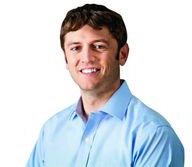
Aris Baras, Executive Director and Co-Head, Regeneron Genetics Center
As an undergrad at Duke, Aris Baras had the proclivity to reach high. In a leadership course, his class was tasked to connect with pioneers in their fields of study. Possessing MD/MBA intentions, and a Greek-American background, Baras made a hopeful but improbable plea to connect with industry titan Roy Vagelos, chairman of the board at Regeneron and retired chairman of the board and CEO of Merck & Co.
“I figured, why not try to reach out to him.” Baras found contact information for an administrator of a board that Vagelos was on and sent a request. Shockingly to Baras at the time, Vagelos responded in less than 24 hours. He soon learned that “Vagelos’ commitment to education and mentoring is unparalleled.” Stemming from the initial contact, Baras got to know Vagelos, speaking and meeting several times a year. His input and guidance continue to be invaluable, he adds.
Clearly, Vagelos saw something in Baras, which is evident in his willingness to give up his time. And to further his support of the young MD/MBA, five or six years ago, Vagelos offered another priceless networking opportunity when he facilitated a connection with biotech colossus, Regeneron’s chief scientific officer (CSO) George Yancopoulos.
Baras began working with the CSO and Regeneron team members taking on projects while still in academia. “Yancopoulos’ ability to drive innovation, develop new technologies, and deliver major breakthroughs over and over again are legendary.” If you’re counting, that’s a pair of awfully stellar mentors to have in one’s corner before leaving school.
While completing his training, Baras contributed substantial time to Liquidia Technologies, a company engineering precision particle-based vaccines and therapeutics, as well as doing some consulting for Regeneron’s translational medicine and technology development activities. Baras has now been at Regeneron for five years, and is the executive director and co-head of the Regeneron Genetics Center (RGC), which he co-founded.
Building from the ground up and now as co-head along with Dr. Alan Shuldiner, Baras oversees the 50-employee RGC that cuts across all of Regeneron’s drug discovery processes by applying large-scale human genetics to drug discovery. It has three goals in mind. First, the RGC aims to assist target discovery through novel gene discoveries and genetics validation for new and existing drug targets. Second, the program aims to inform the development of product candidates in Regeneron’s pipeline by identifying potential indications, supported through human genetics, for these development programs. And third, the RGC enables pharmacogenetics analyses to tease out potential populations with better responses to therapies.
Baras directs collaborations with numerous external organizations, and most notably with the Geisinger Health System, in an effort to build one of the world’s largest comprehensive genotype-phenotype resources combining genomic and de-identified clinical data.
The RGC has sequenced over 50,000 participants in its first six months-and is shooting for a five-year goal of 250,000 individuals. The RGC’s capacity could go even higher as Regeneron continues to scale its program. There may also be strategic opportunities to participate in the President’s Precision Medicine Initiative; Yancopoulos was invited to the White House for Obama’s announcement and has participated in planning workshops for this initiative.
Aside from the Greek connection with his mentors, Baras is amazed by the work culture at Regeneron and considers it to be the “sweet spot” where substantial resources are available for R&D and technology development. Teams can move quickly on exciting science and innovation without being held up by bureaucracy. “It’s a perfect blend of freedom to commit to innovation and to have the resources to pursue important scientific questions.”
Baras places an emphasis on building teams and is committed, “to finding talented and motivated people who fit into the culture, share an unwavering passion for science, and are driven to make a difference for patients.” Regeneron affords its research teams “a pretty flat structure,” as Baras points out, “it’s important to be inclusive giving everyone a voice and the opportunity to make meaningful contributions.”
Additionally, Baras contends that process is critical to success and emphasizes the importance of teamwork in delivering results and making an impact. Regeneron is working across many different fields, therapeutic candidates, and technology development opportunities. “There needs to be real discipline in taking on a project and delivering results. Regeneron has an excellent culture and proven track record of internal collaboration that has delivered major breakthroughs and technological advances time and time again.
“We like to dream big, get things done, and have a lot of fun. We constantly strive to inspire our teams and to be poised to take on the next big challenge without being afraid of failing.”
- Casey McDonald
Triumph Through Diversity

Jay Barber, Associate Vice President,
Global Influenza Franchise & Product Strategy, Sanofi Pasteur
Jay Barber’s nearly 20-year tenure at Sanofi Pasteur has seen him earn his chops in pretty much every one of the company’s sales and marketing departments. He got started “on the ground floor in telesales,” then moved up to become a sales training manager. He also spent time in customer service, eventually leading the department as the company aligned its customer service with its commercial strategy. Embarking on an MBA, he found he particularly enjoyed the marketing courses, so he then decided to take a step down for a role as a product manager in marketing. Before long he was back at a senior level, becoming senior marketing director for the company’s US pediatric vaccines.
Barber’s relentless quest for new skills and experiences saw him leave Sanofi Pasteur at this point (14 years in) to try his hand as a strategic leader at an advertising agency. But after 18 months of this, he realized he “wasn’t meant to be on the advertising side of the business.” Returning to Sanofi Pasteur, he picked up where he left off and his ascent continued apace.
Viewing his role as a mobilizer of immunization through marketing, Barber’s portfolio spans pediatric vaccines for polio, pertussis, Hib (Haemophilus influenza type b), adolescent/adult pertussis boosters and Sanofi Pasteur’s entire flu franchise. His campaigns have used personal stories, family testimonials, non-profit collaborations, and social responsibility initiatives to reach healthcare providers and the general public. Most recently, as commercial lead for the launch of Fluzone High-Dose, a vaccine specifically designed for the elderly, he developed a creative campaign that broke through a commoditized influenza vaccine market and exemplified his deeply held belief that protecting people from vaccine preventable diseases is both a business imperative and a moral commitment.
The Fluzone High-Dose vaccine US marketing approach not only helped Sanofi Pasteur’s global flu franchise reach €1 billion sales in 2014, it also resonated with Barber personally. “My parents are of the age to qualify for this vaccine now; I’m really proud to know they’ve got a better chance of not getting the flu because of something I was directly involved with.” Within three years of leading the launch of Fluzone High-Dose vaccine, Barber had increased sales of the vaccine option by 160%.
Barber is happiest doing what he does now on a daily basis, that is, strategizing: “thinking about where we need to be and what we need to invest in to be successful.” The key challenges of the last five or six years in this regard, he says, have been those brought about by health economics.
“From the moment you’re working with R&D in the clinical development of a product, you’re no longer thinking of designing a clinical trial just on medical outcomes; you’re thinking about how the trial may generate the data for a strong pharmacoeconomic story that demonstrates a health economic benefit to policymakers, payers, or practitioners,” he explains.
But rather than throw obstacles in the way of the drive to prevent or cure illnesses, health economics has made strategizing “more fun,” says Barber. “And if you’re talking about what’s right for public health, it’s pretty easy to prove the value of vaccines, because by immunizing you reduce hospitalization and you reduce complications of other diseases. In fact, what I’m seeing is that the focus on health economics is strengthening the argument for the value of what we do.”
Last June, Barber made his first foray outside the US to lead the global flu franchise, and his goals now are fixed around “strengthening my skills globally and leveraging the marketing learnings from the US globally.”
He admits “for me, the unknown is vast, going from a very US-centric point of view to absorbing a new way of working.”
But Barber’s Sanofi Pasteur colleagues are confident that his new role will provide a greater platform for his talents, and an ideal opportunity for extending his vision to new markets. And his wealth of experience stateside can only be a boon to any future direction he takes.
“I can look back and say that I’ve diversified my experience enough to allow me to think more broadly than if I’d stayed deep in one track,” he says. “I’ve learned skills from every one of my roles that I still use today.”
- Julian Upton
From Soloist to Conductor
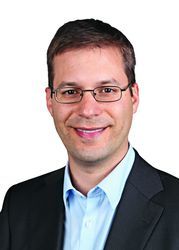
Julian Bertschinger, Co-Founder and CEO, Covagen
Like many of the most gifted entrepreneurial scientists populating the biotechnology space, Julian Bertschinger’s story is almost antithetical to the incrementally advancing career narratives that define the conventional big Pharma leader.
In 2007, at age 30, he went from his post-doctoral program at the Institute of Pharmaceutical Sciences ETH Zürich to founding and leading biotech start-up Covagen, along with his colleague, Dragan Grabulovski. The Zurich-based company was established to develop the technology platform invented by Grabulovski, FynomAb, which fuses binding proteins derived from the human Fyn SH3 domain to antibodies to create therapeutics for the treatment of inflammatory diseases and cancer.
With seed money from Novartis’s Venture Fund, Covagen grew from a one-employee concern (Bertschinger steered the ship alone for six months while Grabulovski completed his PhD thesis) to a 30-man outfit, raised more than $60 million in venture capital, and entered a strategic collaboration with Mitsubishi Tanabe Pharma Corp. in 2012, eventually catching the attention of Janssen affiliate Cilag, who acquired the company last August. Now 38, Bertschinger sees the Janssen purchase as his “new beginning.”
Jumping in solo at the entrepreneurial deep end back in 2007, of course, had its challenges, and from day one Bertschinger had to tackle that steep learning curve that can propel scientists from bench to boardroom. Initially, Covagen had no laboratory; when he located one, Bertschinger had to clean it himself before he could start work. He also set up and administered the company website. More urgently, he had to develop business skills to communicate credibly with investors. In this regard he welcomed support from Anja Koenig of the Novartis Venture Fund, who was “crucial for my personal development,” he says. “I was a hardcore scientist, extremely focused on data and facts. Anja helped me to relate on a business level; she had insights into all the different VC funds available and the political situations behind them.” It was an education very different from what he’d been used to. “I gradually got more and more exposure to the outside world,” he says, “all the while learning the different aspects of drug development in a hands-on role.”
Managing employees was also something Bertschinger had to learn effectively from scratch. But starting from the position of sole employee, it’s a skill he has been able to refine gradually, building his team from the ground up. “When the time came, I had to pitch to investors, I had to hire people, I started to become a real manager,” he says. Since then, he has striven to maintain a “biotech culture,” where employees feel they can make decisions independently with “no committees and few processes behind the decision making.” People in the company “feel a very strong ownership of their projects, so we have a high level of commitment,” he adds. It’s an intimate, supportive culture; one Janssen colleague praises Bertschinger’s “daily engagement with the Covagen team over coffee and lunch.”
Bertschinger sees no reason why the merger with Janssen will diminish the Covagen culture. Of course, he’s encountered processes that make things move a little more slowly, but integration with a bigger organization “gives us access to resources in terms of expertise and money that we could only dream of,” he says. And he is positive about how big Pharma in general has become more open to external innovation, embracing novel platforms at an early stage. In just the last few years he has seen monoclonal antibody technology become a commodity in the industry. “Companies are now ready to run experiments like they do with Covagen,” he says.
Now focused on establishing Covagen as a “highly productive R&D unit within Janssen that is compliant with the wider organization,” Bertschinger wants to see “how a big company functions and how you have to work in such an environment to be successful. ”Having advanced from complete business novice to leader of a high-value biotech in a few short years, one has faith in his ability to repeat this achievement within big pharma. He has proved he has the staying power to see an idea through to fruition, to battle through rough terrain until it becomes smoother riding. One of his favorite pastimes outside work is playing the violin. He took it up at age seven and, more than 30 years later, still rehearses every week with a university alumni orchestra. Clearly, when he commits to something, Bertschinger really commits to it.
- Julian Upton
Taming the Chaos
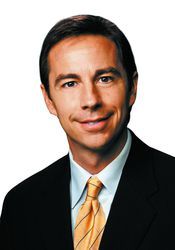
Dan Dietrich, VP, Global Operation Services, Novartis
A mechanical engineer by trade, Dan Dietrich has approached each new role in his 20-plus-year journey leading teams and programs in manufacturing, quality, project management, supply chain, and operations through the lens of what he calls the “Four Pillars.” Three of those pillars are solid and straightforward in their own rights: The position has to have a global impact; it must include a lead team that can work with and support Dietrich; and the role needs to be in an area new to him, so he can expand his learning.
It is the fourth pillar in Dietrich’s criteria checklist, however, that may be the most defining in his career-where the now-VP of Novartis’s global operation services first started as a forensic engineer, performing car accident reconstruction.
“Whatever I take on, it has to be broken,” says Dietrich, who, while earning a BS in Mechanical Engineering at the University of Colorado, served in the US Air Force from 1988-1994, working as an F-16 aircraft maintenance specialist. “I love to build teams up. I love to optimize or blow up the processes. Walking in when it’s just chaos-people are miserable and structure isn’t clear-to walking away and having people excited about what they’re doing and owning what they do, that’s where I have the most fun.”
Rooted as an engineer, Dietrich, 44, has consistently followed the job philosophy of once a process is in control and operating at steady state, teams are mature and self-directed, it’s time to move on to a new role and challenge. He proudly dubs himself “a process and operations guy,” skills he notes that are highly transferable. Dietrich is quick to point out that he’s never been a subject matter expert in his various leadership roles and doesn’t intend to be, instead relying on surrounding himself with such experts. For the results-driven Dietrich, his reputation and value has been built on creating new growth opportunities through the art of process redesign and organizational restructuring.
Dietrich’s resume is rife with such examples, including when he took over as global head of operations and strategy for Novartis’s drug supply group in Basel, Switzerland, in 2009. At the time, the team, Dietrich says, had gone through a series of managers, was losing several subject matter experts, and was overall dissatisfied as a group. According to Dietrich, he approached this role the same way as the others, working with the operations team on either a turnaround strategy or a planning activity. He leaned on his experience to date in quality management models (he achieved a Six Sigma Black Belt in 2007), as well as his skills in empowering teams and installing a global cross-functional matrix leadership structure. Within six months, the external drug supply group increased productivity by 20% and team members reported via surveys of being much more satisfied, according to Dietrich. “Processes were globalized and defined for them,” he says. “Expectations were crystal clear for them, and now they owned the deliverables.”
Another example occurred during Dietrich’s initial foray into the healthcare sector after transitioning from the automotive industry (he was launch program manger for Johnson Controls Inc. from 1997-2000, where he led teams in the US and Japan around the annual Toyota vehicle launch updates as part of Toyota’s joint venture with GM). In 2000, Dietrich joined LifeSpring Nutrition, a nutraceutical startup in Northern California focused largely on the aging population. He was originally hired into a sales and marketing role, but after LifeSpring lost its funding following 9/11, Dietrich was thrust into an operations role as general manager and would eventually be named CEO of the company. Charged with helping boost LifeSpring’s profits, he restructured operations and reduced operating cost by over 50%. It was here where Dietrich honed his skills in people optimization and started to merge his mindset around the two elements of empowering people and pursing operational excellence.
“That was one of the best jobs I ever had, just because I learned so much so quickly,” says Dietrich, who before joining LifeSpring was considering pursuing an MBA. “One of my very close friends at the time shared with me her experience around getting an MBA and what that’s done for her and her career. She was working at [LifeSpring] and she said, ‘You know, Dan, either you can go to school and learn about it, or you can come work at this company with me and learn it and live it.’”
In 2003, Dietrich sold LifeSpring, and in parallel was pursued by Chiron Corporation due to his experience with Toyota. He was hired to lead the biotech’s end-to-end process optimization initiative. Dietrich’s team freed up more than $30 million in inventory for Chiron’s key Betaseron brand, and reduced manufacturing and distribution cycle times by 50%. Novartis acquired Chiron in 2006 and offered Dietrich the position of global head of the drugmaker’s PharmOps Operational Excellent program, based in Basel. Including his time heading up Novartis’s third-party clinical drug supply operations, Dietrich spent five years in Switzerland, often traveling between 10 manufacturing sites in China, Japan, Egypt, and Europe. In 2011, he returned stateside, where he joined clinical operations, based at Novartis’s US headquarters in New Jersey. After increased responsibilities, Dietrich was promoted to his current role, managing a centralized group that delivers services to the global and local clinical study teams for Novartis within the general medicines area. His organization provides support to the teams responsible for executing clinical trials, from startup to database lock, from executing the protocol to identifying which sites to use, to ensuring sites understand the protocol and attract the right patients.
Dietrich oversees seven teams encompassing 130 employees in the US, Switzerland, and India. The teams provide services in central analytics; vendor management; IT systems; quality control for data tools such as the trial master file (TMF) and the clinical trial management system (CTMS); study budget management; and clin-ops process improvement. The creator and system owner of TAPAS (Trend and Pattern Alert System), Novartis’s home-grown clinical data mining system, is part of Dietrich’s leadership team. The tool, he says, has transformed how the company conducts its risk-based and adaptive monitoring by providing algorithm and threshold-based scores of key risk factors for all current Novartis trials. The operationalization of this tool and process globally is one of Dietrich’s greatest professional successes.
“That’s a big field I’ve seen within just the last couple years of how can we manage big data, whether it’s coming externally or from our own internal systems,” says Dietrich. “How can we translate all that great data into knowledge to help us predict risk and take action and mitigate early?”
- Michael Christel
Stretching to Success
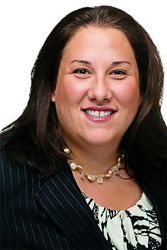
Staci L. Julie, Senior Vice President and Chief IP Counsel, Teva Pharmaceuticals
Staci L. Julie might research patent laws in Estonia or investigate potential assets in South Korea as she leads her team through the complex, ever-changing territory of intellectual property rights laws and regulations. To stay current with Teva Pharmaceuticals’ expansive portfolio of generics and brands, leadership encourages a culture that pushes employees to stretch, Julie said. This kind of environment suits her just fine. Julie has built a career reaching into unfamiliar areas to master new skills and subjects.
Early on, Julie’s father encouraged her to study chemistry for her undergraduate degree, given her aptitude for math and science in high school. After college, she again sought the advice of her father, a lawyer. He suggested a career in patent law, which at the time had very few female attorneys. “You have to be open to trying things that stretch yourself,” Julie said. She enrolled in Georgetown University Law Center, and, in 2000, Fish & Neave, now known as the Ropes & Gray intellectual property group, hired her directly out of law school. The Wilmington, Delaware, native hesitated at the thought of a life in New York City. She asked her then-fiancé, Richard, a native New Yorker, to promise they would leave if she ever grew tired of it. As an associate, Julie began work on her first litigation case, which ended up lasting four years. Her client was Teva. One day, Julie’s contact at Teva called her up and asked if she ever thought about coming in-house. After four years in the big city, Julie looked longingly at the suburbs again.
In March 2004, she signed on as associate director of legal affairs of Teva USA. Her career then rocketed upwards through eight positions within legal affairs and IP divisions. In March 2015, she became Teva’s senior vice president and chief IP counsel. In this global role, Julie leads a team that deals with all patents, trademarks and copyrights related to branded and generic products. She also provides final guidance on the evaluation of potential assets and any other opportunities related to IP strategy. “The energy is invigorating. Even when you think you might have a slow day, you always find you have something new to do.”
As Teva expands into other countries, the IP team must navigate new patent and regulatory regimes to find the best ways to get products to market. The U.S. regulatory system is directly linked to the patent, which creates a clear mechanism within product development, Julie explained. “Some of the territories we are moving into are not linked systems, which creates uncertainty.” But uncertainties can translate to opportunities.
Julie likes pushing the boundaries of tradition within pharmaceutical IP. She regularly studies IP functions and procedures in other industries, like technology, “to see what’s different from how pharma has always operated.” Her hard work paid off earlier this year when she led the team that defended a case before the U.S. Supreme Court – and won. In Teva Pharmaceuticals USA, Inc. v. Sandoz, Inc., the Supreme Court ruled in a 7-2 opinion that the U.S. Court of Appeals for the Federal Circuit must be more deferential in reviewing the decisions of trial judges who oversee patent infringement litigation. The Federal Circuit had earlier nullified Teva’s patent for its multiple-sclerosis drug Copaxone. As a result, the Supreme Court sent the case back to the federal circuit for further proceedings. “The case involved a legal issue specific to all patents,” Julie said. “And it’s still not over, but it will be changing patent law as a whole.”
The Supreme Court case can be chalked up as a win, but success necessitates a willingness to accept failure, she said. “How you deal with failure, how quickly you learn from it, adapt to it, and move on from it is crucial,” she said.
Julie encourages her team to admit to and address failures. “If employees are worried about failing, and they don’t raise their hand when something bad happens, then that’s a problem,” she said. An equally critical aspect to leadership is to celebrate individual successes because employees want to be recognized, both one-on-one, and in front of their peers. She described her approach to leadership: be an active listener and be aware of how you are perceived by your team. “I haven’t been shy to ask people what I can do to improve,” she said.
Besides better communicating, companies should also be grappling with the best way to grow well in an increasingly global and connected world, Julie said. For her team, which spans 11 countries, Julie looks for commonalities to leverage Teva’s scale, but also nurtures local business and marketplace knowledge. “A local understanding of patent laws creates value for those jurisdictions, and I don’t want to lose that in the name of globalization.” Another approach to managing industry complexity is to build a community of experts within each department. “We have to figure out what skill sets we need to bring in so we have enough different perspectives to pursue a creative path,” Julie said.
Despite keeping a busy schedule, Julie is quick to point out that she herself plays different roles outside of work as a T-ball coach and fantasy football fanatic. She is mother of twin six-year-old daughters, rabid Philadelphia Eagle fans, just like her. Her husband, Richard, gave up his law career to stay home and raise the girls. “That is a huge factor of my success,” Julie said.
- Kathleen Raven
The Son Also Rises
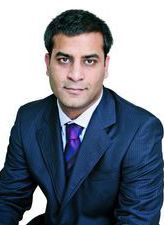
Arjun Handa, Vice Chairman and Managing Director, Claris Lifesciences
For Arjun Handa, leadership is a family trait. His father, Sushil, founded injectables firm Claris 15 years ago; before that he had a track record of business ventures in the Indian healthcare sector. In the 1980s he set up Core Healthcare and in the 1990s he was instrumental in bringing Quintiles to India.
Handa wasted no time in meeting his family’s entrepreneurial expectations. On graduating Ahmedabad’s Gujarat University with a degree in Accounting in 1999, he set up an IT firm that was quickly successful; he continued to run it when he moved to Boston to complete his MBA at Northeastern University. When he returned to India in 2004, his father suggested the firm should become the IT arm of Claris and the two companies merged.
On joining Claris proper, Handa spent time in product development, “learning what was driving the company’s growth,” before rising to a leadership position in manufacturing, where he spent four years. Head of operations from January 2006, he became chief operating officer in January 2008; in September 2008, at age 28, he was made CEO.
In the meantime, the Carlyle Group paid $20 million for a 14% stake in Claris. The investment helped to fuel a major global expansion; by 2009, the company had a presence in 76 countries and had achieved a compound annual growth rate of 40% over five years. Amid this activity, Handa was offered his role as CEO. Wary of his lack of experience in finance, sales and HR, he chose to spend a year “familiarizing myself with those three functions” while easing into the position. The careful transition underlined his diligence and pragmatism; when it was time to fully lead the company, he knew it inside out.
From his earliest days in the Claris labs, Handa suggested taking the company’s biggest product, a generic version of propofol, into the US. His father was apprehensive, anticipating too many challenges as the product was patented there. “But I told myself, one day I’m going to do this,” says Handa. True to his word, last year Claris filed the product in the US and settled the patent litigation around it; Handa hopes to receive approval soon.
He has also proved his mettle in more trying circumstances. In 2010, the company was the subject of an FDA import alert, after reports of contamination.
“We had to work towards a resurrection,” says Handa. “We had to change our architecture of quality, our quality systems, our culture.” In 2012, the company had a successful FDA audit and was allowed back into the US, where its products now number 36 (and counting). Handa regards “that whole turnaround as a great personal achievement.”
While the growth of the Indian pharma market has been huge over the last 15 years, Claris’s injectables business remains mostly export oriented; this sector is still evolving at home. Claris’s injectable products are “more cutting edge; they achieve better recognition and sales in countries with more developed markets,” says Handa. (The company’s infusions business was transferred in 2013 to a joint venture with Japan’s Otsuka and remains focused on the Indian market and others “where infusion is a high-volume/low-value commodity”). Handa is keen, however, to commend the changes India has experienced.
“There’s more potential to do business here now. There are more hospitals, more manufacturing facilities,” he says. “And there’s a lot more talent. Company founders and their key people used to have to resolve learning curves as they went along. Now, there are seasoned professionals who can join a company and be instantly instrumental in leading it. The nurturing of talent has turned erstwhile middle managers into good senior professionals.”
As for his own career development, Handa credits his father as his “true mentor.” But he follows his own path. “I am not as motivated by scale as I am by niche,” he says. As an entrepreneur, he is concerned with identifying gaps in the market. “My father’s generation has given India the basic infrastructure. What is needed now is what is missing. Our business model has to be a balance of off-patent and improved products.”
With plans to roll out 48 new products over the next three years and solidify the company’s position in regulated markets such as the US, Handa is well on the way to securing his goal for Claris-for it to be “one of the most admired companies in the injectables segment.” He has also been rewarded, many times over, by that “time, energy, and focus” his father devoted to making sure his son would carry the skills and expertise to be the right leader for the company’s future.
- Julian Upton
First in a New Function
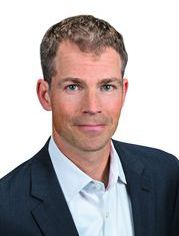
Matthew Lang, Associate General Counsel of Litigation & Investigations, Gilead Sciences
“He traded on respect-whether addressing the opposing council or a court security officer, he held everyone in equal esteem,” reminisced Matt Lang. Not all lawyers can point to a mentor who demonstrated extreme kindness and respect inside and outside the courtroom. But as a young attorney, Lang learned a valuable lesson under the guidance of Edward A. McDonald of Dechert LLP in New York. Lang, who leads a team of 22 lawyers and staff within Gilead Science’s litigation and investigations division, focuses on building strong relationships not only with colleagues, but also his adversaries. This approach may be counterintuitive to litigators, accustomed to playing the role of antagonist, but in the end leads to the best results, Lang said.
In his short career, Lang has proved to be a quick study of getting good results. Born in Toronto, Lang pursued a Bachelor of Arts in classical history at Queen’s University in Kingston, Canada, where he won several awards for his studies. After graduation, he enrolled in the University of Pennsylvania Law School-following his father’s advice to take advantage of opportunities outside his comfort zone. Lang met his wife, Leah, in law school and together they pursued their law careers in New York. At Dechert, Lang noticed that he gravitated towards litigation and securities cases for pharma clients. “With pharma being such a regulated industry, I think lawyers are at the forefront of a lot of issues companies deal with on a day-to-day basis,” he said.
When he and his wife decided to move to the West Coast to be closer to family, Lang began looking at job postings with Gilead. He found an opening in litigation and investigation in Gilead’s corporate headquarters in Foster City, Calif. At the time, in 2009, it was the only position of its kind. “I thought the position had a tremendous potential for growth,” he said.
Now, as associate general counsel, Lang guides his colleagues through myriad responsibilities. His team handles non-intellectual property litigation and disputes, including securities, product liability, commercial litigation, and internal investigations such as government inquiries. Lang and his group oversee the collection of documents for litigation, called e-discovery, as well as privacy and information management and records outside of litigation. “At any given time, the group might be working on strategy, witness interviews, or internal employee training,” he said. “I like to roll up my sleeves and get into the details.”
So do other senior leaders at Gilead, which is all part of the company’s culture of leading by example, Lang said. The company’s market cap hovers around $175 billion, even with only around 7,500 employees, which means every position has to have a big impact. “It’s crucial that we preserve our culture,” which operates within a flat organizational structure and places a premium on integrity and accountability, he said. Much of Gilead’s explosion in growth can be attributed to the leadership’s focus on decision-making rooted in data and science. When the company agreed to pay $11 billion for Pharmasset in 2011, industry critics reacted harshly and swiftly. “They said we overpaid, that the compound wasn’t fully tested, and that it was too much money to gamble,” Lang said. On top of that, no one believed Gilead could get the product to market fast enough to make the investment worthwhile. But Gilead leadership had already analyzed the science behind PSI-7977, as the experimental drug was called then. Gilead marketed sofosbuvir as Sovaldi in December 2013 and the hepatitis C drug has since become a textbook case of a drug that has the potential to cure a disease.
Lang expects the fast-paced growth to continue at Gilead, and with it, increased complexity for staying current on laws that affect pharma companies. Each year has been completely unlike the previous during his tenure that trends or future directions are difficult to pin down. It will be important to gain expertise in new subjects. Areas of interest for Lang’s team are product liability, securities litigation, employment legal risks, and developments with the False Claims Act, also known as the “Lincoln Law,” which targets people and companies who defraud governmental programs.
With employees in more than 30 countries and his own growing team, Lang has given newcomers a lot of advice in his six years with Gilead. He encourages recently arrived team members to be patient and immerse themselves in the company’s values, and get to know the operations and culture well before attempting to drive major changes. New employees who might come in with a lot of experience typically want to recreate what worked well elsewhere. “But they might try too quickly to make a change, without being cognizant of the culture in which they are operating in,” Lang said.
- Kathleen Raven
Leading with the Patient

Jacopo Leonardi, North America Region Head, Hemophilia and Blood Disorders, Baxter International
For Jacopo Leonardi, life is a privilege, a deep well of opportunity that must be replenished every day. The son of a schoolteacher and a businessman, that life left few marks until, at age 17, an auto accident injured his neck and nearly killed him. Exposure to illness and infirmity-the night side of life-left a permanent imprint on his young character. “It was a close call that forced me to realize how just ‘dialing it in’ every day was not a productive way forward,” Leonardi says. “Instead, I resolved to model my behavior on two traits of character: hope, expressed through a positive, optimistic attitude; and purpose, which is seeking real meaning from your own life and in relations with others. It’s the truth I learned from my parents during that long recuperation: to shape your own destiny, you must be fully present for the journey.”
Early relationships proved instrumental in directing Leonardi to a career in healthcare. “I was inspired by my father’s positive energy and inspiration, which he shared with everyone. That led me to the helping professions, like healthcare. I also had an intense curiosity to understand issues on a deeper level, which drew me to research.” As an undergraduate at Rutgers, Leonardi was a Henry Rutgers Honors Scholar and later almost opted for an academic track in neuropsychology before changing his mind to enroll in the MBA program at Duke University. “I did it because I like to build things from scratch,” noting with a laugh, “I thought even then the US health system could use an overhaul and I was the right person to do it.”
But it was Jac’s girlfriend, now his wife Leslie, who connected him to pharma, as a sales representative for Eli Lilly & Co. “I was lucky because at the time Lilly was launching a lot of new products, which eventually led me to assignments in early stage product planning and commercialization. These roles gave me the ideal composite view, consisting of expertise in the science as well as mission-critical downstream stakeholder relationships.
In 2009, Leonardi found his real tie that binds-to the patient. “I accepted a position in Baxter’s Biotherapeutics Franchise, where we focused on a patient-centric business model designed to speed patient awareness and diagnosis for several rare diseases; on average, it was taking patients over a decade to get a proper diagnosis for these conditions.”
His views were put to the test in 2012, when he took on a turnaround assignment to inspire and grow the US hemophilia business, which was affected by conflicted leadership and low morale. To remedy both deficits, Leonardi and his teammates created a bold vision of “striving for a life without bleeds, one person at a time.” “There is much unmet medical need in inherited bleeding conditions like hemophilia,” Leonardi says. “We know that when these people aren’t bleeding, they’re living.”
This vision, which has now evolved into a true calling, acts as a spark that inspires the Baxter team and its communities to prevent bleeding. “We’ve helped over 900 patients move to a prophylaxis regimen aimed at preventing bleeds, translating to over 15,000 bleeding episodes prevented.”
Earlier this year, Leonardi got the nod to lead the entire North America Hematology business, a $1.6 billion franchise of six brands, extending geographically from the US to include Canada, Puerto Rico, and the Caribbean. The business will be a centerpiece of the new company, Baxalta, the spin-off of Baxter’s BioScience division. Describing his new role, Leonardi says he sees himself as a patient advocate, delivering results that matter to patients. His current focus, in addition to exceeding operating plan commitments, is building on his success in re-energizing employee engagement in the US with another corporate culture initiative highlighting the new company’s emphasis on purposeful, patient-centered innovation, encapsulated in the message: “The Promise of the Baxalta spark.”
Leonardi is explicit about the capabilities required to lead Baxalta and other healthcare companies of the future. “The single most important thing you can do as a leader is to create, develop, and engage top-performing teams,” he says. “And to inspire those teams with a vision filled with hope, clarity and purpose. Serve them by helping to create a meaningful, winnable game and clearing the path to success.”
Leonardi notes that lessons in leadership come from all angles. In addition to Baxalta CEO Ludwig Hantson and hematology division president Brian Goff, he derives his greatest inspiration from his North America team and especially Shannon Resetich, leader of the US hematology business. “We are in the incredible position we are today because of her and the others on this, the best team in healthcare.”
Another leadership characteristic is self awareness and life balance. “I keep myself grounded by deliberately keeping up with best friends I have known since I was 13,” Leonardi says. “Leading with the heart is a trait that is still in infancy in this industry because, frankly, it is undervalued and hard to teach. But if you look at where the world is going, companies without a culture of ethics and purpose will stumble.”
- William Looney
The Puzzle Master
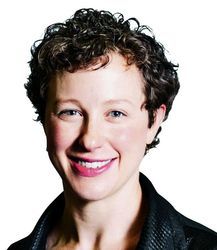
Gaby Mishev, Associate Director of Marketing, Genentech
When asked to describe the accomplishment she is most proud of in her relatively short career, Gaby Mishev replies: “The first time somebody on my team got the promotion he had been working towards was a particularly proud moment for me.”
An associate director in marketing at Genentech, Mishev grew up in New York City with a brother and parents both of whom are lawyers. She attended Brearley, an all-girls private school on Manhattan’s Upper East Side, where she showed herself to be a smart, self-disciplined, and strongly intentional student.
Today, at 37, she comes across as selflessly reserved with a strong desire to help others and a tendency to deflect attention from herself and onto those she works with. She is also the possessor of enviable equipoise. “I learned it from my parents. They’re the calmest lawyers in New York,” jokes Mishev.
As a teenager, however, the last thing on her mind was a future career at a biotech company, or anywhere else for that matter. “I didn’t even know about the industry then,” she says.
She did, however, know two things about herself that would point her in the ultimate direction. She loved solving puzzles, the hard kind. And she loved science, the applied kind that uses science to help people. Intuitively, Mishev followed the advice a friend would give her many years later: “Let your skills be your life directives,” he told her. “Instead of chasing titles, positions, or big salaries, follow what you love doing and what you do well.”
First stop, Harvard, where Mishev received a BA in computational neuroscience. Next, across the pond, to Oxford University for further study and an MSc in neuroscience and then back to Cambridge for an MBA at the Massachusetts Institute of Technology’s prestigious Sloan School of Management.
And it was there, at business school, that her goal came into full focus. After attending several healthcare courses, the related bits and pieces scattered throughout her life like snippets of film on the cutting room floor began to coalesce-books read, conversations, papers written, people met, courses taken, puzzles solved.
Mishev believes in happenstance. “So much, I think, is about listening and talking to people, hearing about their experiences and thinking, ‘Oh, that sounds really interesting.’ I realized that the pharmaceutical industry was where I could pursue all those other things I loved, as well as being in a place that’s at the forefront of science and at a point in the healthcare system where science really becomes helpful to people.”
In 2006, Mishev started her industry career at Roche in New Jersey as an analyst, and quickly moved up to senior analyst assigned to launching a brand. “I was involved in forecast and market research, which I love,” says Mishev. “It’s a wonderful place I think to start in the commercial organization because it gets you out talking to so many of the different functions.”
The next chapter of her life was the result of a different kind of happenstance. In 2009, the year of big Pharma’s big mergers, Roche acquired full ownership of Genentech for $46.8 billion. And with that, Mishev accepted a new position with Roche’s new subsidiary, packed her bags and along with her favorite pair of jeans set off for California to begin work at Genentech.
“I don’t even remember when I last wore anything but jeans,” says Mishev, giving us a glimpse inside Genentech’s culture, which the company itself defines as “intensely casual.” Genentech, founded in 1976, was already a legendary biotech as makers of bio-blockbusters Rituxan, Avastin, and Herceptin. Today, it employs nearly 12,900 people and last year accrued $16.3 billion in revenue. “Employees work hard, but they also know how to enjoy themselves,” according to the company.
Mishev, who lives with her husband and two children in San Francisco, concurs. Genentech promotes a work-life balance that allows her to be home for dinner and go camping on the weekends.
In her current position, Mishev is responsible for Actemra, the first interleukin-6 (IL-6) receptor-inhibiting monoclonal antibody approved to treat rheumatoid arthritis. The company launched Actemra in 2010 into what has become an increasingly crowded disease space currently populated with 11 other approved therapies, each having their value for patients.
“Actemra is also indicated for pediatric juvenile idiopathic arthritis and systemic juvenile idiopathic arthritis,” says Mishev, who has the lead strategy role for the brand as well as sitting on its global marketing team as a voting member.
“We all have a different thing that brings us to work every day,” reflects Mishev. “One of the things that I really enjoy about this type of work is solving problems. It gives me a sense of accomplishment.”
Mishev manages a small brand team, which, she says, requires listening, adapting to change, and providing what the customer needs. “Genentech takes the extra step to consider what the patient really needs,” she says. “At Genentech, when you onboard to a brand, the very first thing that’s addressed is the patient’s experience with that disease state, and the patient’s experience taking the medicine, which is invaluable for remembering what it is that you came to work to do that day.”
- Marylyn Donahue
Community Champion
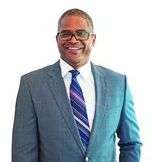
Ken Miller, Worldwide President, BD Diabetes Care
Before Ken Miller had finished his degree in Business Administration at the State University of New York at Albany, he was courted by three organizations-Eli Lilly & Co., Rhône-Poulenc Rorer, and MetLife. On graduation, he decided he liked the sound of the healthcare company best, as it was “focused on doing good for the communities it served.” So he began carrying the bag as a sales rep for Rhône-Poulenc in Westchester County, NY.
Miller moved quickly up the sales and sales management ladder;in 1998, he decided to take up a marketing opportunity at Pharmacia Corporation, where he would become director of marketing. Five years later, Miller moved to Basel, Switzerland, to take on the same role for Roche, before going onto Novo Nordisk to lead the organization’s business development and new product commercialization division.
He joined BD (Becton, Dickinson and Company) in 2011, and the last four years have seen him traverse the organization’s infusion, drug delivery, and medical solutions businesses, before being appointed worldwide president of BD Diabetes Care in January.
Returning to BD’s diabetes business (where he also previously served as worldwide vice president) is particularly gratifying for Miller, as it’s here that he says he sees most clearly how patients benefit from the organization’s products. In an industry that isn’t averse to platitudes about caring and altruism, Miller’s commitment to helping others is sincere and heartfelt.
He speaks proudly about a letter he received recently from a 7-year-old boy, Brady, who was struggling to manage his diabetes because of a fear of injections.
“Brady saw our new 6mm syringe and after that overcame his fear and started taking his insulin injections. He sent us the most beautiful picture that he’d drawn: on one side is a monster, representing the big syringe, and Brady is there, crying; on the other side, he’s smiling, holding our small syringe. It touches my heart to know that what we do has such an impact on patients’ lives.”
For this reason, Miller always encourages his teams “to keep the patient at the center of their decision-making.” He praises BD’s Leadership Standard in helping to create a “more inclusive and impactful workforce.”
The Leadership Standard, introduced in 2013, is focused on accelerating the development of key talent at multiple levels, via courses at BD University, for example, or through its Leadership Accelerator programs.
“Our progress is closely tied to our leaders; they are driving our transformation to a more global, innovative, and customer-centric organization,” Miller says.
With his appointment to a global leadership role, Miller’s own career development is continuing apace. “It has been a great learning experience,” he says. But his time in Switzerland also helped to attune him to the cultural differences of patients around the world and how products should be tailored accordingly, whether that is “simply from a pricing perspective, making products far more affordable in countries such as China, Turkey, or Brazil, or about introducing products that are more technically complex to markets that have the infrastructure to embrace them.”
He hasn’t thought too hard about where he’ll be in five years’ time-after all, he’s only been in his new role for a matter of months-but he says: “If I can look forward, I’d just like to be in a position where I can continue to have an impact on people and on communities.”
If you hadn’t noticed already, “community” is a key word for Miller. It drives his activities outside work just much as it does in the office. “My friends and my church community are paramount to me,” he says.
Miller has partnered with his church on programs to address homelessness and tackle literacy in African-American and minority groups. Added to that, he’s a member of the board of the directors of the Northern NJ–Rockland County Chapter of the Juvenile Diabetes Research Foundation (JDRF), the largest charitable supporter of type 1 diabetes (T1D) research. Its mission is not to rest “until T1D is fully conquered.”
“What I’ve learned to appreciate is that you can be tough on standards and have a high commitment to excellence and delivering exceptional results,” Miller says. “But at the same time you can still be tender-hearted with people.”
- Julian Upton
The Frontier Function
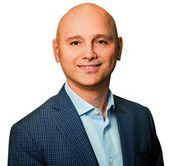
Liviu Niculescu, Vice President of Global and US Medical Affairs, Takeda Oncology
As a physician treating patients in Romania, Liviu Niculescu often thought of the big picture issues with convoluted healthcare systems. During one stint on a urological surgery team, Niculescu remembers thinking to himself, how do we know what’s really best for a patient? Would avoiding an invasive procedure ultimately be more beneficial? And of course, who’s paying?
These questions led the now vice president of global and US medical affairs for Takeda Oncology (formerly Millennium Pharmaceuticals) to travel to Boston for an additional degree in public health at Harvard. Niculescu considers the move to be one of many risky strides he’s taken in his career, and his willingness to tread into unfamiliar waters, a key attitude he tries to impart on his mentees.
Niculescu has transitioned numerous times from his clinical career to outcomes research and to medical affairs. He stepped into a director position with a foot in Latin America-based clinical trials, followed by a US position and, subsequently, a global role. His willingness to bounce from post to post has been equaled by his aptitude to toggle between therapeutic areas spending his earlier years in pain and inflammation and making the move to oncology in 2008.
It’s been an indirect but purposeful career path, far from anything that was planned or preordained, he laughs. Each leap could be characterized by serendipity and curiosity. One’s ability to learn rapidly and function in a new environment is key. “I’ve found at each step that the ability to learn quickly is more important than having the specific necessary knowledge coming into a role.
“I try to remember this as a leader for my team as we prepare for the first global launch of an oral therapeutic to treat multiple myeloma,” adding that he often, quite strongly, encourages his team members to consider taking bold steps of their own into roles for which they may not consider themselves ready. “Don’t underestimate the role that luck plays in our careers. If an opportunity with more exposure comes your way, even if it doesn’t seem to be the right time, jump on it! It’s hard to control when and how opportunities come, but you can control your training and skills,” he explains.
“During several transitions in my career, I had mentors or colleagues that really believed in me-sometimes more than I believed in myself.” Former boss, Simon Lowry, who’s now at Novartis, saw Niculescu through several stages at Pfizer. And Gail Cawkwell, now with Purdue Pharma, was vital, “a tremendous inspiration showing me what it means to be medical director: how to put patients first, the significant impact this has on business, the value of long-term thinking, and finally, how to bring this mindset to day-to-day business activities,” says Niculescu.
It’s been vital to maintain relationships with mentors along the way, he says. While at Harvard, Niculescu was heavily influenced by Peter Neumann, now director of the Center for the Evaluation of Value and Risk in Health at Tufts Medical Center. The two have maintained a collaborative relationship since. Mentors have become colleagues who inform Niculescu’s everyday work and also impact his current role as mentor and team leader.
“As a leader, my role is to build membership within teams and to define clear objectives,” Niculescu notes. “I spend a lot of time finding people and seeing how they work together. It’s vitally important to build leadership within each team. I spend lots of time getting feedback on myself and the team. There’s a strong effort to listen more than talk.”
For example, Niculescu explains, “I know that if the team is having lunch, and they eat faster than me, I was talking more and listening less.”
Before the move to Takeda Oncology, eight years at Pfizer gave Niculescu the chance to learn the global business of healthcare and pharma, bringing him exposure to the realities of the industry in different countries and regions. Takeda Oncology has been building a global entity, so the experience in different environments at Pfizer prepared Niculescu to work with people in all different cultures.
Healthcare around the world is becoming increasingly complex-the pace of change is accelerating. And with medical advances, expectations for pharma’s potential around the world are increasing.
“The aspirations are sky high, but we can’t shy away from questions, even if we’re establishing a high bar,” Niculescu says. “Can we cure cancer? And if we can, how can we provide access to these treatments?” Niculescu believes that professionals in medical affairs will be key for developing these treatments, largely through collaborations with other companies as well as academic researchers, groups that have innovative thinking in their blood. “I think, as an industry, we’ll be up to the task.”
- Casey McDonald
The Customer Touch

James Robinson, President, Astellas Pharma US
For Jim Robinson, the past is an ever-present reminder of how important earned reputation is to the business of pharmaceuticals. As president of Astellas Pharma US, Robinson, a youthful 45, represents a global Japanese-based company with two centuries of uninterrupted history behind it. “There is a deep well of integrity and trust that comes with success in serving multiple generations of patients. The Astellas culture is founded on a commitment each of us makes to maintain that trust, with patients, every single day.”
Honoring this cultural heritage is a particular challenge for Robinson. Not only is the US the second largest market for Astellas after Japan, with more than $2.95 billion in sales last year, it presents management with a disruptive dynamic marked by transformations in the customer and payer base. “The bar has been set higher for the industry in meeting the expectations of key stakeholders. Health reform is forcing institutional changes in the way care is financed and delivered; payers are demanding more evidence to differentiate medicines on the basis of real-world value and impact on overall health outcomes; and regulators want better assurances of safety and efficacy, which places more pressure on innovative companies like Astellas to develop the data that satisfies this standard, pre- and post-marketing. All of this is coming together simultaneously, presenting both challenges and opportunities for Astellas.”
Robinson’s background makes him well-suited to the task of adapting US pharma’s traditional, physician-focused business model to today’s competitive realities. As the middle of five children in an Irish immigrant family from Skokie, Illinois, Robinson grew up knowing that competition was a given-and that opportunity had to be grasped quickly. It was his family’s next door neighbor, a sales rep for Syntex, who first sparked his interest in the pharmaceuticals trade. “I had some interesting conversations with him about patients and the physicians who cared for them. The strong human element in this business appealed to me, so when I finished college at DePaul University and the wife of our rugby coach told me of a position as junior sales rep for Schering-Plough, I dropped plans for law school and took the job.”
Robinson spent the next 13 years at Schering-Plough, a pioneer in introducing novel marketing and sales tools like DTC, whose innovations spawned a new generation of topflight marketers-many of whom, like Robinson, now hold key posts elsewhere in the industry. “Right after I started, in 1992, I found myself involved in the launch of Claritin, which proved to be an iconic, unprecedented success. The job allowed me to build a strong selling proposition for Claritin based on the rigorous science and clinical value behind the product. Overall, I liked pharmaceutical sales, as it provided the opportunity to form close relationships with physicians, and to see my territory grow based on my own individual effort.”
Today, those days are largely over. Robinson is working with a map that is far more abstract. “Individual contacts with clinicians are now only part of the equation. Decisions on prescribing are made by committees through formularies that can reduce clinical discretion, focusing not on the individual but the entire population being treated. Unfortunately, the human element in the work of detailing a medicine has diminished.”
Robinson was recruited by Astellas in 2005 in a new post, vice president for health systems, which was charged with making sense of the shifting alignments in healthcare and to help the Japanese company navigate the changes. Robinson coined a new mantra for the commercial teams, which he calls “the customer touch.” “It was founded on the simple premise that if you ask customers what they want, they will tell you. I insisted that everyone who worked with me had to start each day with a commitment to learn something new from a customer. As a manager, it was the only sure fire way I could ensure our business plans would never stray from the fundamentals.” A new look was also needed to help coordinate the logistical challenges posed by Astellas’s expanding pipeline, which has spawned the launch of seven new products-including Astellas’ first entries in the hotly contested cancer space-since Robinson joined the company.
In 2011, Robinson was chosen to lead Astellas’ entire sales and marketing organization, where he introduced a top-to-bottom restructuring plan to accommodate those larger trends in the business environment, from consolidation in the private payer, provider and insurance segments, to phase-in of new healthcare delivery mechanisms under the Affordable Care Act (ACA). Examples include accountable care organizations (ACOs), where drugs must compete with other products and services for a share of a finite pool of funding. “We decided to direct our commercial efforts in a more integrated structure, the Strategic Account Business Unit (SABU). Each SABU is empowered to identify and understand what the customer is really focused on, translate this knowledge into a seamless cross-functional strategy, and finally to determine the right mix of resources Astellas needs to develop and implement what the customer wants and, ultimately, benefit patients.”
In his current post as president, Robinson continues to be involved in business model innovation. He relates that the SABU structure has been pilot-tested in five different US markets, with the direct involvement of key customers. “This has led to some significant fine tuning, particularly because of the sheer diversity of demographics and customer preferences that exist in a country as big as the US. But the critical metric around the SABU has not changed: to refocus our marketing and sales skills to address the evolving needs of customers and to customize each relationship in a way that keeps us flexible and nimble.”
Looking at the larger concept of active leadership, Robinson says the key task of a big Pharma leader today is to “unstick” status quo thinking and move the organization toward a culture that can adapt to change. “Being a change agent requires first removing internal barriers among functions so that colleagues who do want to do things differently are allowed to collaborate,” Robinson says.
A practical expression of this is the Guiding Coalitions program Robinson introduced that brings employees with like-minded interests together from different parts of the company to solve an organizational problem or contribute to a social cause. Three projects have been launched to date, including one that encourages Cross Therapeutic Area meetings to exchange ideas on improving services by the company to local communities.
Looking forward, Robinson contends that future leaders will share one characteristic: relevance. That is achieved, he says, by staying one step ahead of market trends. “Sifting out signals from the noise, maintaining a high level of understanding of the business you are in-this will not change, but become even more important as competition emerges from different quarters.”
- William Looney
Biotech Builder
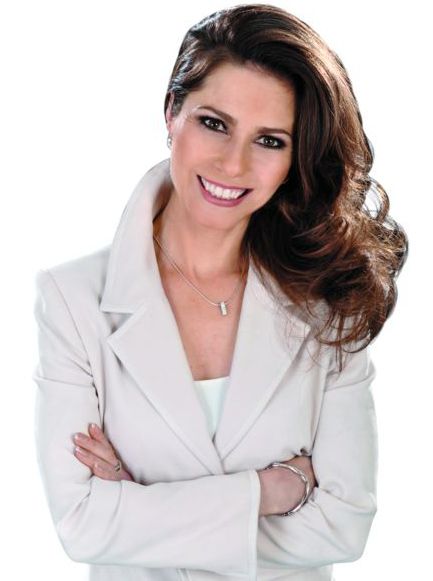
Sandra Sanchez y Oldenhage, Deputy CEO, Probiomed Mexico
Sandra Sanchez is a pioneering female innovator in a country where healthcare is mostly the provenance of men-and old habits. More than any man, the youthful Sanchez is recognized in her native Mexico as the face of the country’s fledgling biotech industry. Not only did she oversee launch of Amgen’s biotech business in Mexico, taking it from start-up to national sales leader in complex biologic drugs, Sanchez is now plotting the transformation of Probiomed, an established local producer of APIs, into a global export powerhouse focused on next-generation biosimilar drugs.
Her success is more than personal. Sanchez sees Probiomed as the vanguard of a new life sciences growth model centered on the unmet health needs of emerging country markets, one built on low-cost, high-quality “frugal” innovation. “Probiomed is unique in Mexico for our strategy that begins with knowledge of the gene, developing cell lines, and progressing to an end-product based on the underlying biology of a specific condition,” says Sanchez. “In Mexico we can do that efficiently because we are vertically integrated, and for less than what it would cost in the US or Europe, thus making life-saving medicines available to vulnerable populations.”
She takes special pride in serving as a Board member for the global NGO, Save the Children. “When your business has an impact on patient lives, especially children, you move the needle on many fronts. Healthy behaviors must start at the beginning of life if we are to tackle the many diseases that continue to kill millions worldwide but are entirely preventable. Obesity here in Mexico is a good example. We have the highest rate for children of any country.”
Sanchez believes that, in pharmaceuticals, doing well financially confers a responsibility to do good for people. While she never planned her entry into the pharmaceuticals business, the connection to healthcare came naturally. “My father was a well-known psychiatrist here in Mexico. Through him, I was able to see the world of pharmaceuticals not as a trivial pursuit but one with a positive impact on people’s lives. At university, I developed a strong interest in business as a way to get things done. That drew me toward a career where I could mix the practical aspects of commerce with the larger societal welfare context you get from work that raises the standard of health.”
After a brief initial stint as an assistant brand manager in Mexico, Sanchez moved to positions of increasing responsibility at Pfizer, Merck & Co., G.D. Searle, Pharmacia, and Amgen. Deliberately, Sanchez opted for assignments that exposed her to all aspects of the biopharma business, from strategic planning to operations. A good part of her career has also been spent in the US, where she is a dual national due to having an American mother, a native-and very assertive-New Yorker.
Sanchez attributes three personal characteristics to the influence of her mother: a tendency to speak directly, without artifice; a disdain for gender stereotypes; and a high energy quotient. “She was different in possessing a singular sense of self and the confidence to set her own terms in life rather than be defined by the circumstances she was given. Historically, these are not characteristics you generally find in a Latina,” Sanchez confided. “I learned the hard way that the culture in Mexican business discourages straight talk, particularly from women. Recognizing those nuances in conversations and opting to empathize rather than confront helped me reverse some early career setbacks, when I was running blind as to the impact I had on the sensitivities of others on my teams. At the same time, I inherited my mother’s love for exercise that years later still give me the physical and mental stamina to match the output of any male colleague.”
Sanchez cites Amgen as the point where her years of experience and high-octane personality all came together to remarkable effect. In addition to getting the governance right-prior to registering as a local business, Amgen was virtually unknown in Mexico-Sanchez had to overcome numerous obstacles, including an essential requirement for commercial manufacturing that could only be resolved with changes in the law, which Amgen succeeded in doing despite being a newcomer to Mexico’s patronage-laden politics. More important, Sanchez quickly obtained a local license to operate that normally took foreign multinationals years to achieve, securing national formulary status for 85% of Amgen’s product portfolio. Sanchez also takes pride in Amgen’s recognition, just two years after opening for business, as one of the best places to work in Mexico.
The winning streak has continued at Probiomed, where Sanchez is committed to securing three goals: (1) improving corporate governance, above and beyond the standard required for a family-owned business; (2) globalizing company operations to leverage opportunities beyond the Mexican market; and (3) seeding organic growth through new products and development of biosimilar drugs. “Probiomed’s business model is consistent with a key public health objective for all countries, rich or poor-to find savings from the substitution of off-patent innovator biotech products for safe, high quality, low-cost biosimilars. These savings can then be applied to investment in the next generation of innovative biologic therapies,” Sanchez says.
After slightly more than a year as Deputy CEO, Sanchez tells Pharm Exec that Probiomed is exporting products, manufactured in four state-of-the-art facilities in Mexico, to 14 countries on four continents. Local employment has risen to more than 1,300 people. In terms of operational excellence, Probiomed facilities are today rated the highest in value added per unit of production among all manufacturing sectors in Mexico.
What has Sanchez learned about the art of leadership? She cites four hard-earned lessons. First is a clear vision, communicated and shared consistently. “Your role as leader is to articulate the agenda-to set aspirations, develop the strategy but NOT to seek to execute against plan yourself. Help your team figure that out; make it clear you are there to add value.” Second, leadership is always about people. “It’s never about you-what matters is how well you as leader connects with the team. Delegate tasks, but don’t delegate relationships. And give power away-yes, hold the flag but let others on the team move it forward.”
Sanchez also believes in what she refers to as “hard empathy: Be tough-minded on standards of performance, without being blind to the impact you have on others.” Third, a leader must hold values that are authentic, because these values underpin everything a manager does. The fourth lesson is about perspective. “I treat ‘work-life balance’ as an active verb, one that will change many times over the course of a career.”
The next step for Sanchez is making Probiomed a global player in biotech. This means approaching business as a community-building effort. “We have to do a better job at the politics of working with all stakeholders to secure that ‘win-win’ outcome.”
- William Looney
Chief Growth Officer
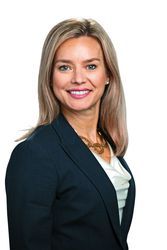
Julie Smith, CEO, Raptor Pharmaceuticals
What’s the formula for building a West Coast biotech? Changing out break room bowls of candy for fruits and nuts and promoting employee fitness seem like no brainers. A distance runner, CrossFit enthusiast CEO might may be a bit of a cliché. Her ever-orbiting Miniature Pinscher, Ninja, for the Northern California dog-friendly office should round out the image.
“The dogs are an important part of the culture here,” explains Julie Smith, recently appointed CEO of Raptor Pharmaceuticals. “Everybody has to be ready to deal with the fun and chaos (and mishaps) they bring. It’s a wonderful way to bring down stress in an office with people not having to worry about rushing home to take out their pets.”
Smith, an East Coast native who is now “happily and hopefully, permanently relocated to the West Coast,” is building more than a culture. She’s confident that Raptor Pharmaceuticals is fit to become a rare disease leader.
“We have every opportunity for growth in the rare disease space,” she says, “We are very confident that we’re going to be a story of which people will want to hear more.” Becoming a leading rare disease company is at the heart of Raptor’s mission, and with the alignment of patient centricity and scientific integrity, Smith hopes to steer the firm to the front.
Smith sees her role as chief growth officer of the public biotech, which has one commercial product and several Phase II trials underway in new indications.
The launch of Procysbi (cysteamine bitartrate) delayed-release capsules in an orphan indication has been a successful one so far, she says. The drug gained FDA approval in April 2013, followed by European approval in September.
Commercializing a rare disease product in the US and Europe entails growing a complex business. It has meant recasting the company with a high performance, more seasoned team, which has been an exciting experience, Smith notes.
“I’ve based most of my career moves on assessments about people. I believe in the caliber of the Raptor team, the integrity, and the science. I’ve come to learn that life is too short to work with anyone that’s not like that.”
Smith joined Raptor as executive vice president of strategy and chief operational officer in September 2012 and took the helm as CEO in January of this year.
The appointment followed an extensive rare disease upbringing. Smith cut her teeth at Bristol-Myers Squibb, then in 2000, she took a position as the second business person hired at Novazyme, a start-up eyeing Pompe disease. Genzyme acquired the company, and Smith had the opportunity to see its product all the way to the market, a fulfilling experience, she notes.
Smith stayed on at Genzyme and was employed as VP, globalmarketing at Genzyme for almost five years until 2006. While at Genzyme, Smith gained exposure to the business on the truly global scale, the complexities of distributing and commercializing products to 88 countries.
After Genzyme, Smith spent two years at Jazz Pharmaceuticals and then four at Enobia Pharma, a company targeting hypophosphatasia, the ultra-rare disease of bone mineralization. Smith served as chief commercial officer of Enobia, which was considering going public but was preempted from doing so by a substantial bid from Alexion. Alexion has the Enobia product, Asfotase Alfa, in front of regulators now, Smith noted proudly. FDA granted priority review for the treatment in March.
In her career, Smith has observed industry changes that she is bringing to her efforts at Raptor. “Where we used to see huge sales forces, and all the benefits and challenges that come along with them, we’re now seeing a much more targeted, more scientific, and more sophisticated exchange of information,” she says. “It’s no longer a volumes game.”
For a company like Raptor in the rare disease space, but across the industry as well, the level of science is higher, so the commercial efforts must follow. “Even if it were permissible, simply buying a doctor lunch just wouldn’t be enough-you need a brilliant field force that can master the science and educate effectively on the approved label,” Smith says.
Rare disease treatments, with their substantial price tags, clearly have been at the forefront of the value proposition conversation for some time now. Smith sees the mission at Raptor as providing value on a differentiated basis.
With the team for growth in place, Raptor may look to grow opportunistically via business development. “We are somewhat agnostic to specific areas of growth, but confident in our ability to add value,” Smith says. “We’re not going after the sexiest newest highest risk areas like gene therapy. We know how to develop therapies, get them to patients, and commercialize for rare disease patient populations. So we can continue to grow with core capabilities in rare diseases.”
- Casey McDonald
Lessons from a Sporting Life
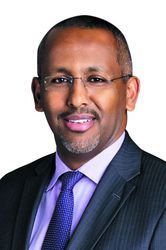
Menassie Taddese, Vice President, Finance, Global Innovative Pharmaceuticals, North America, Pfizer Inc.
For Menassie Taddese, soccer proved the pivot point for an essential life lesson. Arriving in the US in 1982 as an 11-year-old immigrant from Ethiopia, Taddese had one skill that he could use to make friends: an affinity for what he and other foreigners called football, the sporting world’s simplest game. “I established my American identity in an Alexandria, VA, youth soccer league, where a strange sounding name of double consonants proved less important than me helping the team move ball to goal. But suddenly our coach died, and l had to confront a break in the connections that had given me such confidence in a new country. With no replacement in sight, I went to my father and told him, as a 13-year-old, that I intended to take on the grunt work of coaching if he would serve as the necessary adult, presiding over our Sunday games and signing the paper work required to legitimize the fun we kids were having in beating all those uptown rivals.”
His father agreed-reluctantly-and the ruse worked. “I became the team’s chief motivator and disciplinarian. I took on the risk of making decisions for the group. I mustered the courage to force teammates two or three years older than me to do laps because they jeopardized our wins by failing to listen. And I came to trust my instincts, a trait I still summon every day at Pfizer to counter the tendency of bright people to over-think a necessary decision-that ‘paralysis by analysis’ mindset.”
When asked why he took on this assignment, Taddese alludes to something fundamental about the nature of leadership. “I did it because of the personal fulfillment I got from loving the game and my teammates. I learned who I was. At 13, I became self-aware. Some people never experience that in a lifetime.”
Another youthful driver was the example of his parents, who, despite having no formal education beyond high school, pushed Menassie and his siblings to become the first in their extended family to obtain advanced degrees. “I was always good at numbers and I inherited from my parents an analytical nature, so that led me to concentrate in economics and accounting as an undergraduate at Virginia Tech, which I then followed up with an MBA from Penn State.”
His first inclination was to pursue a career in the technology sector, a path that appeared set after a job offer from a tech giant. But a friend’s recommendation quickly brought a second opportunity, from Pfizer, which prompted Taddese to compare the two companies’ business models. “I knew a lot about tech while knowing next to nothing about health and science. I realized quickly that Pfizer faced a far more complex business challenge based on the reality that there are so many intermediaries between the patient and the company making the medicine. As an analytical person, I liked that, with so many interested stakeholders, you have to connect the dots and think things through-in healthcare, it’s harder to manage for a 100% outcome.”
In his ensuing 18 years with Pfizer, Taddese has had ample opportunity to test that premise, with diverse assignments covering most line and corporate functions at HQ and internationally. After a series of rotational assignments in corporate, his first major postings were in Treasury followed by a role in South Africa as finance director (CFO) and then country manager. In 2011, he became vice president for finance in the US primary care division, Pfizer’s largest single business segment, where he supervised the financials side of a $13 billion annual revenue stream. Currently, his expertise is leveraged to promote efficiencies in high-growth opportunities for innovative patented products.
Taddese views himself as a facilitator, working to speed decisions and direct resources to achieve the best outcomes for the business. “The analytical piece is my foundation,” he says. “Many times, I am the one person in a room of specialists with the capacity to drill down and ‘pressure test’ different ideas. I ask the pertinent questions-what, why, where, how, and when-so that all perspectives are aired and considered. Then I help the team progress to a decision and make certain we have the resources necessary to execute.”
“Ability to take a macro view is critical,” Taddese says. In that sense, his work exemplifies the industry trend toward a transformation of the CFO role, from in-house numbers cruncher to integrator and strategist for the entire business. One corrective that Taddese applies in evaluating his own leadership at Pfizer is being able to innovate at a pace that exceeds the rest of the market. “The future of our GIP portfolio depends on this. It’s about removing obstacles that slow decisions unnecessarily. For example, in an organization as large as Pfizer, scientific validation of assumptions has to be coupled with good instincts and an appropriate tolerance for risk.”
Looking forward, Taddese is frank about the hurdles facing the industry from a demographic transition in the patient base combined with the growing market power of payers. “Before 2050, communities of color will be the majority of the US population,” he says. “Given the long lead times in drug development, this means the industry needs to promote more diversity in clinical trial populations while investing heavily in evidence-based tools that demonstrate how our products improve health outcomes. There are many opportunities for companies who get this right.”
Continuous market churn also requires a new set of qualifying criteria for the next generation of pharma leaders. Taddese cites three character traits as key.
The first is courage and tenacity. “Leaders will have to make tough decisions that divest the status quo. There will be frequent setbacks; the capacity to persevere and to learn from mistakes will be a distinguishing, stand-out factor in superior management.” Taddese, himself, had to cope with a professional low point during his time as South Africa country manager. “I aimed high and made decisions I thought were appropriate for the local market, but weren’t fully aligned with regional or global interests.” The lesson Taddese draws from the experience is to move on and communicate the positive-one where a setback can become a reverse “best practice,” preventing the same outcome from being repeated elsewhere.
The second character trait is cultivating a strong network of support. “Allies are not won by accumulating business cards but by advocating on behalf of others.”
The third trait is cultivating the art of listening. “The higher up the ladder you go, the more important it is to hear more-and to speak less. And leveraging social media as a business tool puts a premium on interpretation. That is hard to do if you aren’t an active listener.”
What’s next for Taddese? The job description is secondary; what’s essential is cultivating that fertile mix of people and personalities that helped spur his childhood success on the soccer field.
- William Looney
Hip to the Customer Experience
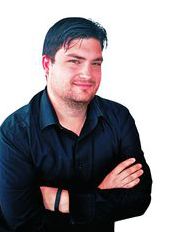
Timothy White, Senior Director & Head of Global Customer Interaction Management, Lundbeck
Not often will you find someone who has worked as a tour manager for a record label or a third-party Apple vendor on this list. But Timothy White, senior director and head of global customer interaction management at Lundbeck, has done just that. Growing up in Pennsylvania, White was surrounded by the pharmaceutical industry, but before he took his first position in the industry at Merck & Co., he was heavily invested in PM Records.
This correlated to his Bachelor of Arts from Lehigh University, majoring in History and minoring in Music Business Administration. This path seemed unlikely for someone working in the pharma industry, but after taking an entry level web-development position at Merck, this would soon change. White noted that his mentors and the leadership he worked under would go on to mold his role as a leader later in his professional career. At Merck, his manager taught him a lot of the business basics, but more importantly how to effectively manage a creative team and not micro-manage, a quality that suits him in his position at Lundbeck. Soon after his time as the head of eMedia at Merck, White moved on to Novartis in Spain, furthering his exposure to the pharma industry. As head of eMarketing, White developed the strategy for all digital and multichannel marketing efforts, drove innovation in new channels, and did it with a team of seven employees.
“Working under my mentor at Novartis was where I really learned how to inspire a wider organization around transformation, something I use almost every day,” White says. After multiple successful years within Novartis, with responsibilities growing to support greater Europe, White was recruited into his current position at Lundbeck.
Lundbeck is a multinational research-based pharma company that is focused on improving the lives of individuals living with brain diseases. Currently, the company is undergoing a strategic transformation from having a limited product portfolio with a strong focus on the European market, to having a more broad CNS portfolio with a true global footprint. To help achieve this, White’s role is tasked with transforming Lundbeck’s overall customer experience to meet its diverse stakeholders’ needs through multiple channels of communication.
“We want to maintain a center of excellence that supported all of the various ways in which we communicate with our various stakeholders,” White says. “What we communicate is certainly the most important thing, but with the growth of digital and social media, and our customers changing preferences to obtaining information, ‘how’ we communicate is becoming crucial as well.”
White and his team have developed and managed Lundbeck’s corporate social media strategy, created and executed integrated digital strategies for all brands, changed the approach to how Lundbeck interacts with various customers through key scientific and promotional events, and implemented a new holistic approach to customer relationship management (CRM) and multichannel communication.
The key to his success is a diverse team and a willingness to empower his staff of 12 professionals from a mix of countries. White explained how building a diverse team ended up paying dividends by providing critical thinking required to address alignment issues and sensitive discussions around technology. White also put a few younger people in key slots and empowered them to act on behalf of the group, just like his mentors put faith in him early on in his career.
When asked what drives the communication changes in the pharma industry, White calmly responds: “The consumer world has driven a big change in pharma, particularly how we interact with our customers.” White noted certain issues he feels are impacting the industry and Lundbeck. One is the disruptive impact of new technology, which is affecting all industries at the moment; it has the potential to disrupt the life sciences significantly more than the others.
Overall, White’s message is a compelling one and his role is significant for our youngest EPL, at an early stage of his career. These are the type of people that will champion change within the pharma industry and continue to rise through the ranks. White is especially focused on doing the right thing; he did not interview to be PR-friendly, but to really shed some light on how younger people need to be heading into this industry if they really want to direct the change they want to see within the industry.
- Miraj Barodia
